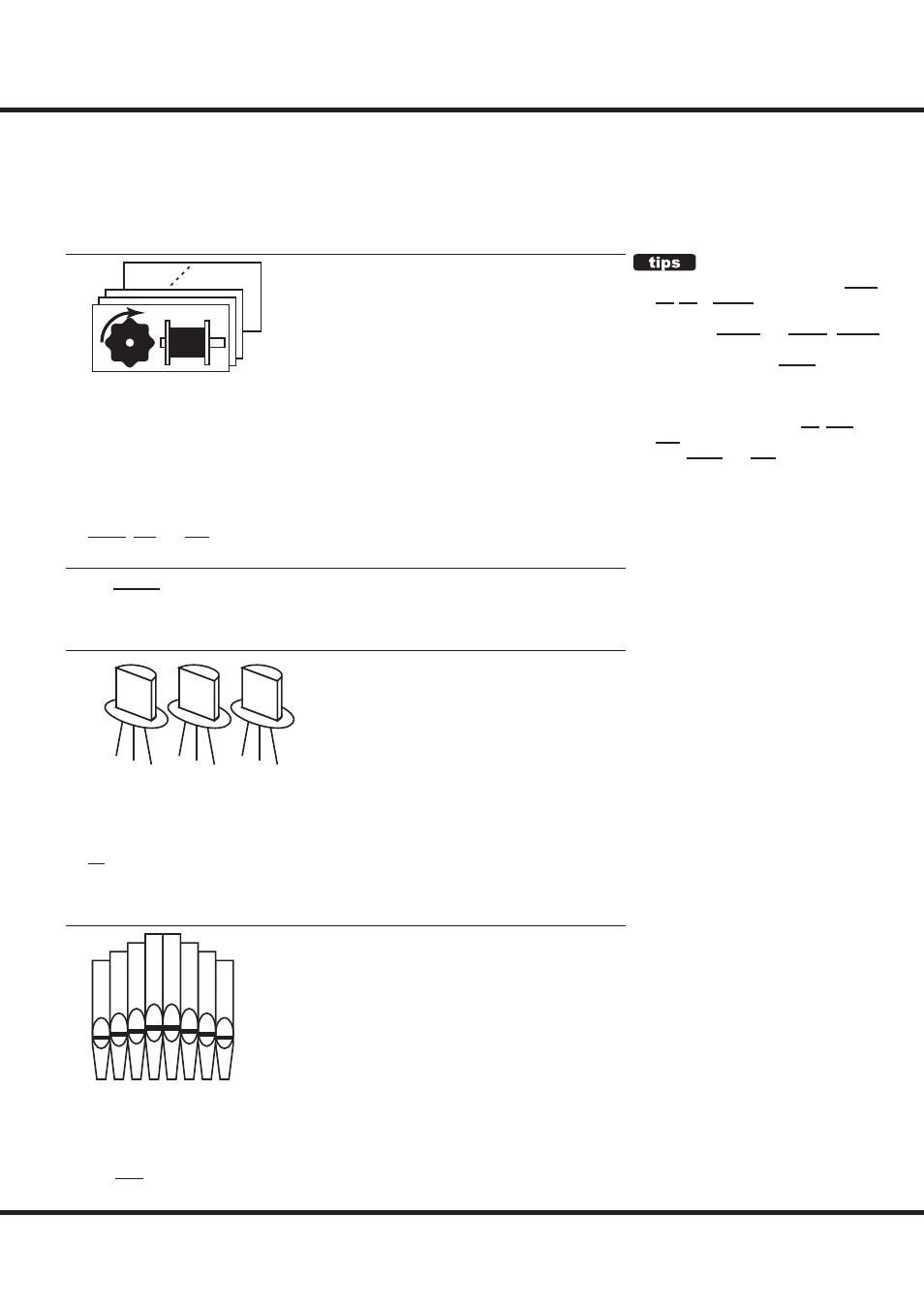Organ types, Tone wheel (a-100, b-3, c-3), Mellow – Hammond SK Pro-73 73-Key Portable Keyboard/Organ User Manual
Page 37: Transistor (vx, farf, ace), Pipe

37
Turn On And Play
ORGAN TYPES
Th
e Drawbars on your SK PRO can be made to control organ sounds other than traditional
Hammond Drawbars. Several makes of combo organs, for example, also used Drawbar-
type controls to register the sounds, which were actual organ voices rather than individual
harmonics as with Hammond Drawbars.
TONE WHEEL (A-100, B-3, C-3)
Th
e Hammond Organ’s original purpose was to duplicate the pipe organ, however, they
became famous for producing a unique sound of their own.
Tone Wheels are the method by which tone-wheel Hammond Organs generate sound. Each
frequency is generated by a steel disk 1 7/8” in diameter and containing a number of high
spots on its outer edge. (See the illustration above.) Th
ese disks are the Tone Wheels. Th
e
most common tone-wheel generator has a total of 96 tone wheels, all with diff erent numbers
of teeth - some wheels have 2 teeth, others have 4, 8, 16, 32, 64, 128, up to 192 teeth. Th
e
classic Tone Wheel design uses 91 tone wheels to generate the musical tones.
A-100
,
B-3
and
C-3
are traditional Tone Wheel sounds.
MELLOW
Th
e
Mellow
setting replicates the non-mechanical electronic Hammond tone generators such
as the Concorde, the X-5 combo organ and the later “multiplex” organs such as the B-3000
and 340 series Elegante.
TRANSISTOR (Vx, Farf, Ace)
As transistors gradually replaced vacuum tubes in electronic circuits it became possible to
produce light-weight combo organs. Th
ese have been used extensively in rock and popular
music since the early 60’s. Th
e type of circuitry is diff erent from maker to maker or model by
model. We have replicated 3 representative types here.
Vx
replicates a British combo organ which combines triangle waves and square waves using
several footages. “Farf ” and “Ace” both replicate combo organs (Italian and Japanese) which
use tablets to combine sound waves which are fi ltered to produce diff erent tones.
PIPE
A pipe organ produces sounds by pushing pressurized air through sets of wood or metal pipes
called Ranks or Stops. Th
ere are many diff erent types of Pipe Stops which produce sounds
of diff erent pitches, timbres and levels of volume. Each Stop is identifi ed by a unique Name
indicating what type of sound it will produce when selected.
Th
e
Pipe
Organ replicates several diff erent types of pipe organs by using the Drawbars as
drawstops or stop tablets to create pipe organ registrations.
PEDAL ORGAN TYPES
When using the Tone Wheel Organs (
A-100
,
B-3
,
C-3
or
Mellow
) for the UPPER & LOWER
Parts, you can select two different PEDAL
Voicings -
Normal
and
Muted
.
Normal
replicates the Pedal Drawbars of a vintage
Hammond Organ while
Muted
more nearly
duplicates the mellow Pedal Drawbar tones
of an electronic Hammond.
On the Transistor Organs (
Vx.
,
Farf.
, and
Ace.
), the PEDAL Voicing is automatically
set to
Muted
. For
Pipe
, the Pedal Drawbars
register Pipe organ voices to complement
the UPPER and LOWER Pipe Voices.